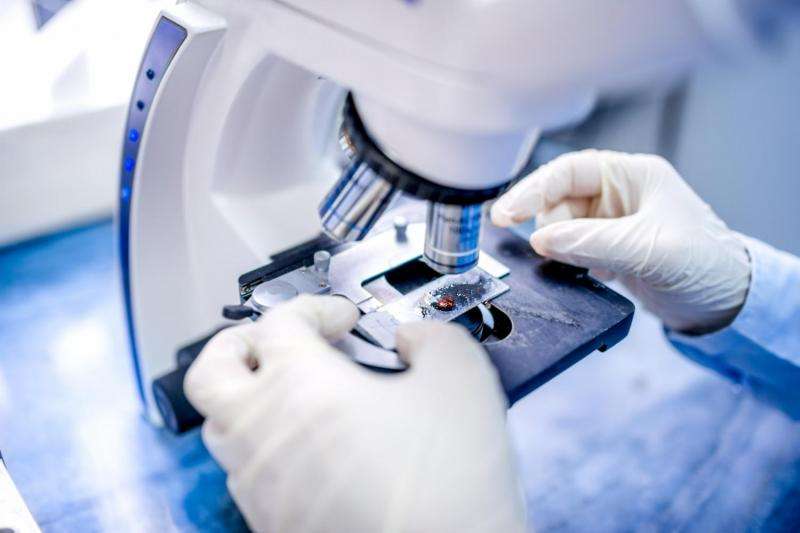Cause of chemoresistance in small cell lung cancer discovered

Approximately one year after successful treatment with cytotoxic chemotherapy and radiotherapy, patients with advanced Small Cell Lung Cancer (SCLC), which primarily affects heavy smokers, generally relapse with recurrence of tumours that are resistant to further chemotherapy. At this point, the affected patients usually only have a few months to live. The reason for this was hitherto unknown. Researchers at MedUni Vienna, led by Gerhard Hamilton (Department of Surgery), have now discovered that circulating tumour cells combine, making previously chemo-sensitive cells into chemo-resistant cell complexes.
"The circulating tumour cells aggregate to protect themselves from chemotherapy – like a circle of covered wagons – thereby preventing any active agents from entering," says Hamilton, describing the process. These "aggregates" can comprise hundreds of thousands of cells, be up to 2 mm in diameter and be eight times more resistant to chemotherapy drugs – firstly because hypoxic conditions are created inside the aggregates and secondly because these tumour cells reduce growth and are therefore less sensitive. The results were recently published in the prestigious journal Scientific Reports from Nature Publishing Group.
These results were facilitated by the permanent cultivation of circulating tumour cells of patients with advanced SCLC in Vienna. This was the first time in the world that this had been done. The research group headed up by Hamilton and Robert Zeillinger (Molecular Oncology Group, Department of Obstetrics and Gynecology, MedUni Vienna) and Maximilian Hochmair (Otto-Wagner Hospital) successfully developed seven cell lines from blood samples and then analysed these in the laboratory.
"And so, after 30 years of uncertainty, we managed for the first time to identify the causes of chemo-resistance," explains Hamilton. The scientists now intend to conduct further studies to find out how to either prevent or destroy these cell aggregates. According to the MedUni Vienna expert, a highly promising approach is to break up the cell complexes using enzymes or inhibitors.
Lung cancer now leads the field when it comes to cancer-related mortality in women
Fifteen percent of people with lung cancer have Small Cell Lung Cancer. By the time of diagnosis, SCLC has usually already formed metastases and surgery is no longer an option – the prognosis for those patients is therefore poor. Their prospects are even worse, if they have developed resistance to chemotherapy. "In such cases, patients usually only survive a few months," says Hamilton. "In view of the fact that lung cancer has now overtaken breast cancer as the commonest cause of death from cancer among women, that is alarming. Since 1972, the proportion of deaths among women due to lung cancer has increased from 10 percent to 22 percent – a figure backed up by the latest results from Statistik Austria. Young people, in particular young women, who smoke should be aware of the high risk of developing SCLC, as well as other non-malignant diseases."
More information: Lukas Klameth et al. Small cell lung cancer: model of circulating tumor cell tumorospheres in chemoresistance, Scientific Reports (2017). DOI: 10.1038/s41598-017-05562-z


















